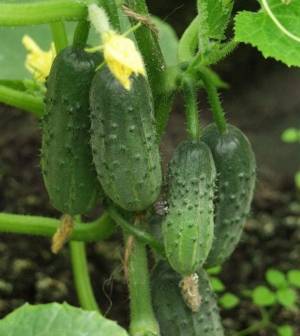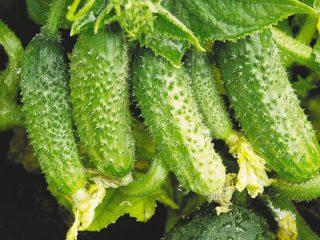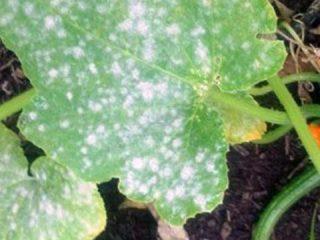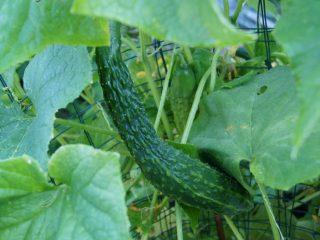Content
Numerous breeders are working tirelessly to create new, more and more advanced plants for various purposes. They also paid attention to people's favorites - cucumbers. The subject of their work is such fundamental characteristics as shortening the growing season, resistance to diseases, productivity, taste and consumer qualities.
For more than 10 years now, the interest of ordinary gardeners in bush variety of cucumbers. They vaguely resemble the popular mini-banana brushes. Just as small, neat and very tasty. They, of course, have their own characteristics both in preparation for planting and directly during cultivation and care. But their appearance, consumer qualities, early maturity and productivity do not leave anyone indifferent.
Bunch cucumbers. Joy or disappointment
First of all, bunch cucumbers - these are the same greens familiar to everyone. They just have the ability to form several fruits from one node is genetically inherent. Thus, a kind of beam or brush is obtained. These, of course, are not cucumbers the size of Zozulya.Small cucumbers about 100 mm in size are formed. There can be from 3 to 9 pieces in a bunch.
Depending on the chosen variety, both the timing of fruiting and the labor intensity of plant care will vary. There is a direct dependence on the type of bunch cucumber variety chosen:
- plant with strong branching. This type of cucumber is the most labor-intensive to care for, but it is also the most productive. It has the longest growing season;
- cucumber with medium branching. Unlike the previous type of plant, medium branching is not so labor-intensive and has a shorter fruiting period. Its yield is not very different from that of a variety with strong branching;
- with weak branching of the stem. This type of whip does not require significant labor costs during ongoing care. It practically does not form lashes and grows in one stem. It has the shortest growing season and lower yields, unlike previous types of plants.
All varieties of bunch cucumbers intended for open ground are of the parthenocarpic type and are extremely photophilous. In them, the bulk of the resulting flowers have female characteristics that do not require pollination. Such plants practically do not produce male empty flowers.
Variety of varieties. To be happy or sad
It is necessary to select a variety of bunch cucumbers for certain growing conditions.
At the same time, we should not forget about the need for regular care for them.In some cases, you may have to abandon the variety you like and limit yourself to a less demanding specimen. This is especially true for cucumbers with a strong degree of branching.
Understanding that the formation of ovaries in a bunch directly depends on the growing conditions of the cucumber will help you choose a specific variety:
Early ripening variety "Blizzard"
Modern parthenocarpic hybrid. A plant with weak branching, which is almost absent in the lower part of the bush, which indicates the low labor intensity of its cultivation:
- An extremely early ripening version of bunch cucumber. Fruits on the 35th day of its growth;
- up to 5 greens are formed in one ovary;
- fruits are small in size (about 80 mm) and weighing close to 70 g;
- the yield value exceeds 15 kg/m2;
- the variety is resistant to most traditional diseases, including powdery mildew;
- is most suitable for climatic zones close to the conditions of Ukraine, where in early May it is possible to plant seeds in the ground;
- in central Russia it is more convenient to grow this variety through seedlings. In this case, it is necessary to plant the seeds at the beginning of April.
Caring for plantings is no different from ordinary cultivation of cucumbers. You just need to remove the side shoots more carefully. It is proposed to use trellises for growing plants with a planting density of 40 cm or more.
Early ripening variety "Detinets"
Like the previous variety, this is a parthenocarpic hybrid. The plant is indeterminate with an average degree of branching. In connection with this, the labor intensity of growing this variety is slightly higher than that of the “Vyuga” variety.
The characteristic features of this variety are expressed as follows:
- the beginning of fruiting begins on the 45th day of its growth;
- forms up to 5 ovaries in one axil of a healthy leaf;
- medium sized fruits. Weighing 100 – 120 g, the length of the cucumber reaches 120 mm;
- yield – up to 15 kg/m2;
- the variety is extremely resistant to cladosporiosis;
- lays an early harvest in all leaf axils, except the lower leaf;
- It is better to start growing seedlings in mid-April, so that by the time they are planted in the ground, consistently warm weather has established.
A trellis growing method with a planting density of no more than 40 cm is recommended. The variety is very responsive to the use of micronutrient fertilizing and preventive spraying with fungicides against diseases.
Early variety "Okhotny Ryad"
The variety is a bright parthenocarpic hybrid of early fruiting time. 40 days are enough for the first appearance of the ovaries. The degree of branching depends on the number of green shoots on the shoot. The more there are, the shorter the branch. The most abundant and high-quality harvest is expected at the beginning of fruiting.
The characteristic features of the variety are:
- the variety has medium-sized green leaves 100 – 120 mm long;
- up to 6 ovaries are formed in each leaf axil;
- all greens have a beautiful, thorny shape with excellent taste and consumer characteristics;
- the variety has universal use for procurement and storage;
- seedling cultivation method is recommended;
- this variety is resistant to most traditional diseases except downy mildew (downy mildew);
- it is characterized by a long fruiting period both in open ground and in greenhouse conditions;
If the ovaries do not form, and the plant has sufficient vegetative mass, the ends of the main shoots should be pinched off the plant.
Cucumbers in open ground - some useful tips
Growing bunched cucumbers in open ground is similar to growing conventional varieties.
But some tips on growing them can still be given:
- 2 weeks before the intended planting of bunched cucumber seedlings, it is necessary to properly fertilize the planting site. It will be very useful to add up to 2 buckets of compost and a couple of spoons of mineral fertilizer to each square meter of land;
- the day before planting, water the beds generously with warm water;
- monitor the temperature of the ground at a depth of 100 mm. It should not be lower than 150. Plants should be planted at a distance of at least 400 mm from each other;
- immediately before planting, it is necessary to spill each hole with a weak solution of ordinary potassium permanganate (1 g per bucket). After planting the seedlings, mulch it with a mixture of humus and peat;
- In anticipation of return frosts, the plantings should be covered with lutrasil stretched over arcs. In the established warm weather, when the danger of return frosts has passed, we tie the bunched cucumbers to the trellis;
- Growing shoots of strongly and moderately branching varieties should be regularly shortened. It is necessary to remove all female flowers in the first four axils along with regrown shoots;
- Fertilize once every 2 weeks. Urea - one and a half spoons per bucket, cow manure - diluted in a ratio of 1: 10. At the beginning of flowering and during its maximum phase, treat open ground cucumbers with Epin or Zircon.This treatment will increase the resistance of ground cucumbers to possible changes in conditions and activate the process of filling greens.
New varieties of bunch hybrids for open ground can please their zealous owners not only with a rich harvest. They have both excellent taste and good consumer characteristics. You just need to remember, when choosing the variety you like, that the size of the harvest itself will depend on the degree of branching of the variety. The higher this degree, the longer the fruiting period.
But low-branching varieties, although they have a shorter period of green growth, are the least labor-intensive to care for, since they do not have side shoots. Thus, if a gardener is regularly with his plantings, his fate is 20 kg of greens per bush and a lot of work. If such an order is impossible, then low-branching varieties are the only way out. But in any case, there will be a harvest.















